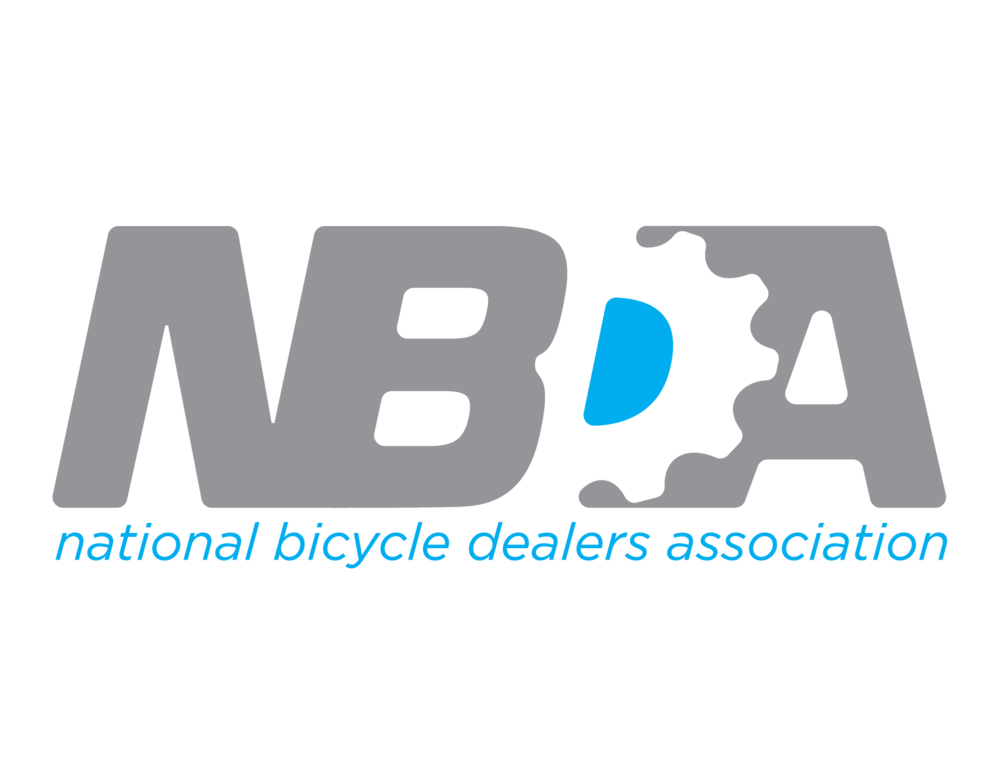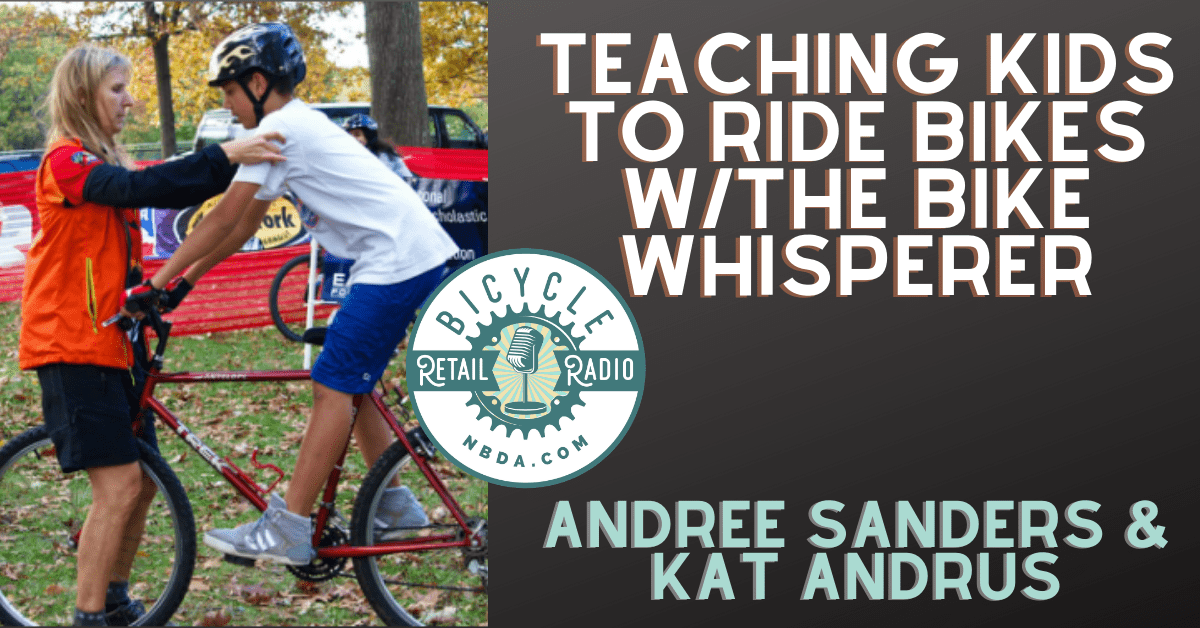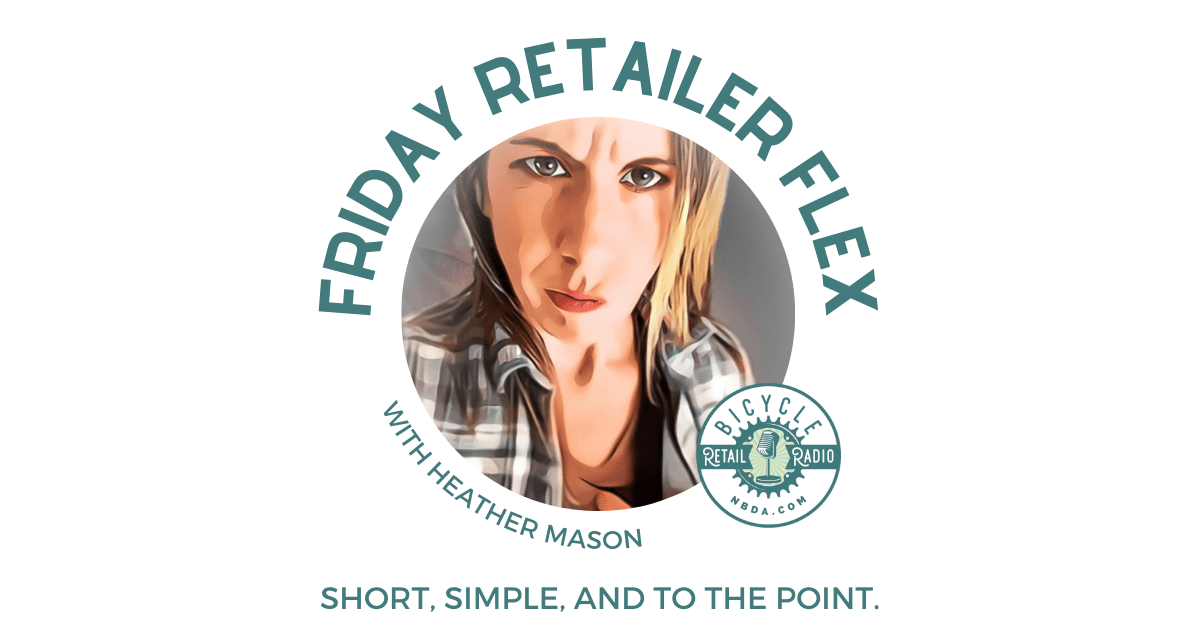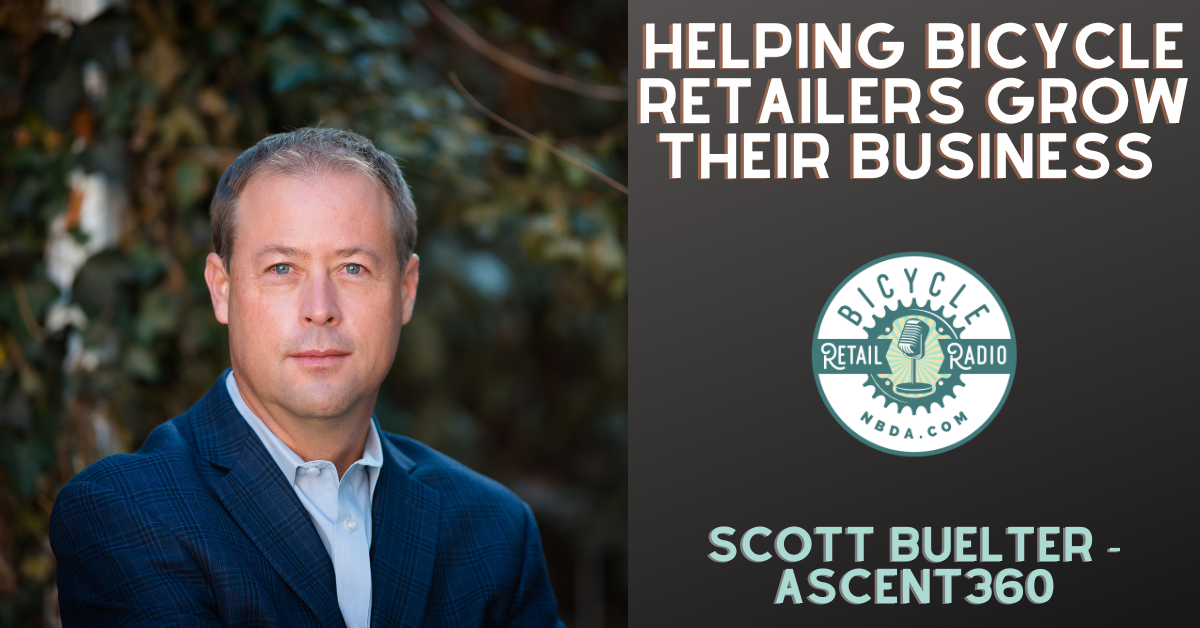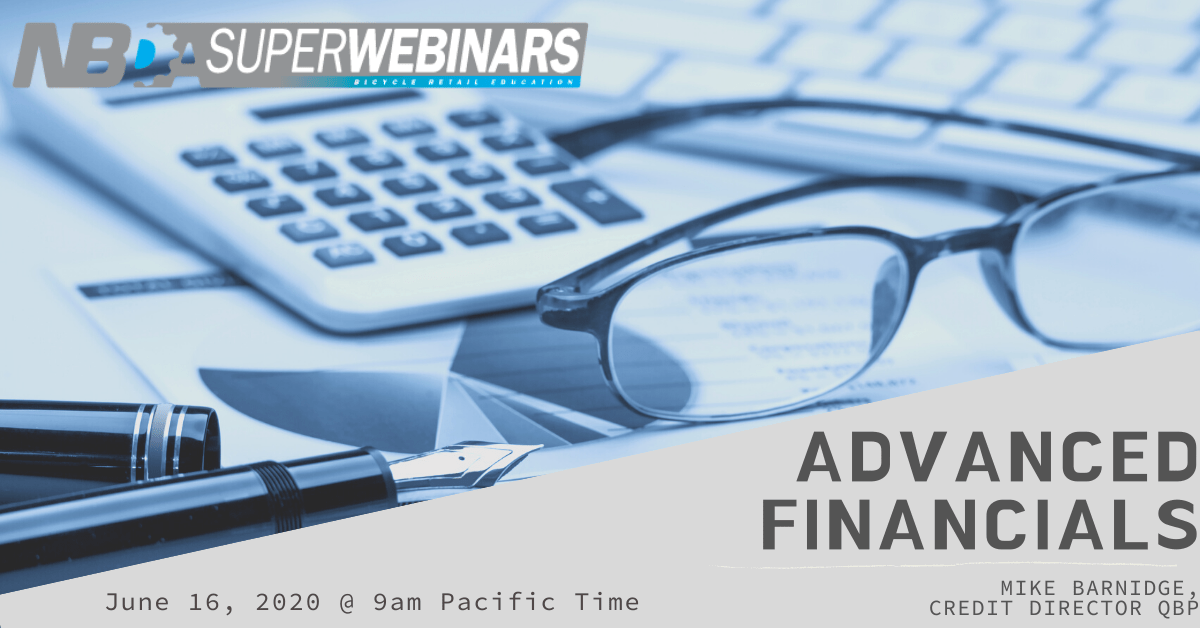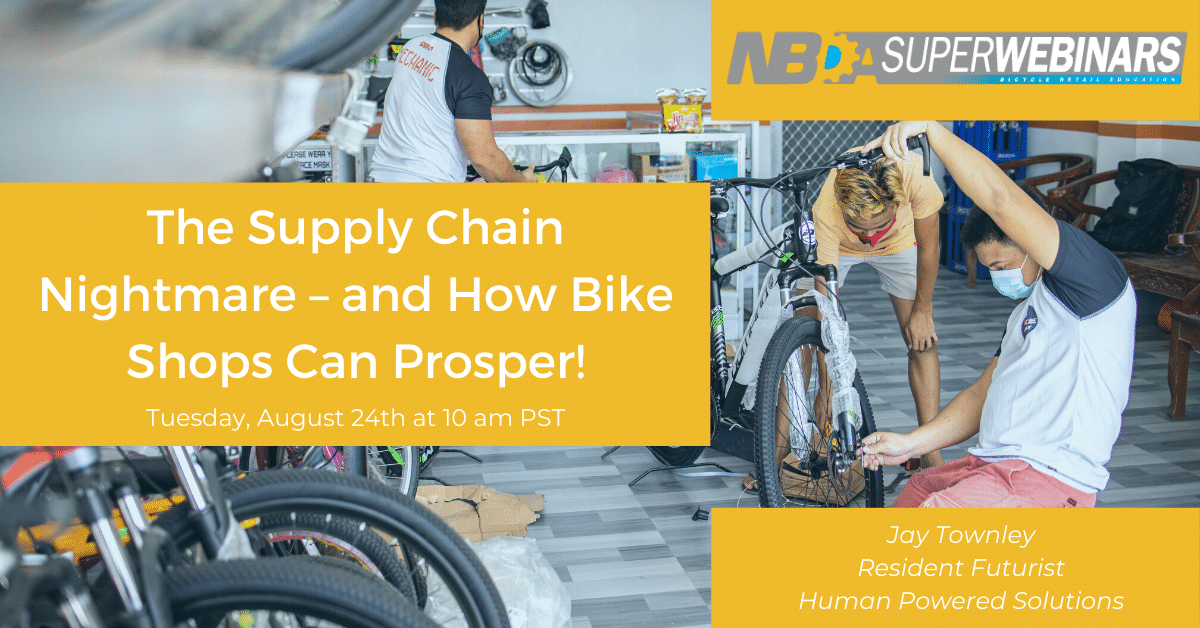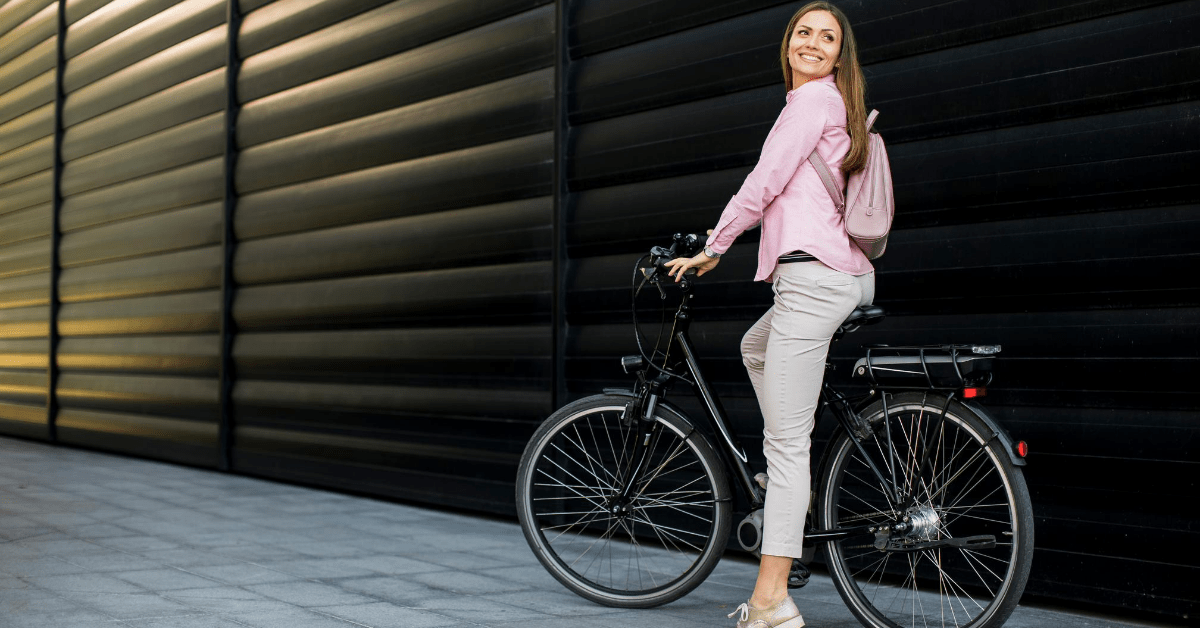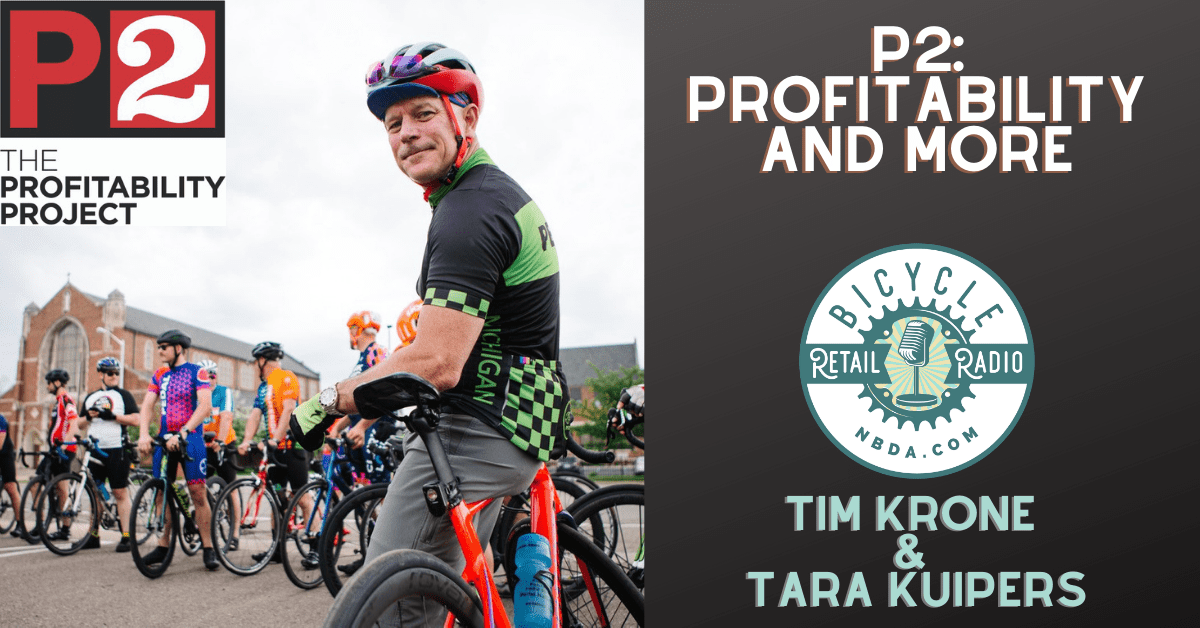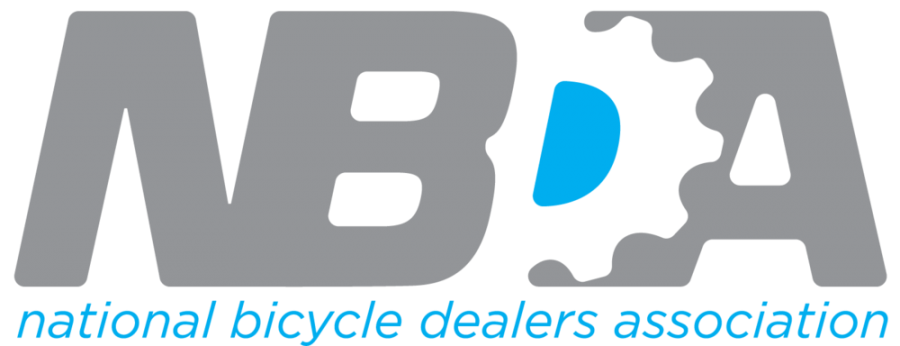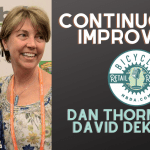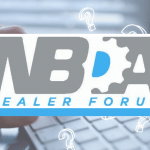Teaching Kids to Ride Bikes w/The Bike Whisperer
[fusion_builder_container hundred_percent=”no” equal_height_columns=”no” menu_anchor=”” hide_on_mobile=”small-visibility,medium-visibility,large-visibility” class=”” id=”” background_color=”” background_image=”” background_position=”center center” background_repeat=”no-repeat” fade=”no” background_parallax=”none” parallax_speed=”0.3″ video_mp4=”” video_webm=”” video_ogv=”” video_url=”” video_aspect_ratio=”16:9″ video_loop=”yes” video_mute=”yes” overlay_color=”” video_preview_image=”” border_color=”” border_style=”solid” padding_top=”” padding_bottom=”” padding_left=”” padding_right=”” type=”legacy”][fusion_builder_row][fusion_builder_column type=”1_1″ layout=”1_1″ align_self=”auto” content_layout=”column” align_content=”flex-start” content_wrap=”wrap” spacing=”” center_content=”no” link=”” target=”_self” min_height=”” hide_on_mobile=”small-visibility,medium-visibility,large-visibility” sticky_display=”normal,sticky” class=”” id=”” type_medium=”” type_small=”” order_medium=”0″ order_small=”0″ dimension_spacing_medium=”” dimension_spacing_small=”” dimension_spacing=”” dimension_margin_medium=”” dimension_margin_small=”” margin_top=”” margin_bottom=”” padding_medium=”” padding_small=”” padding_top=”” padding_right=”” padding_bottom=”” padding_left=”” hover_type=”none” border_sizes=”” border_color=”” border_style=”solid” border_radius=”” box_shadow=”no” dimension_box_shadow=”” box_shadow_blur=”0″ box_shadow_spread=”0″ box_shadow_color=”” box_shadow_style=”” background_type=”single” gradient_start_color=”” gradient_end_color=”” gradient_start_position=”0″ gradient_end_position=”100″ gradient_type=”linear” radial_direction=”center center” linear_angle=”180″ background_color=”” background_image=”” background_image_id=”” background_position=”left top” background_repeat=”no-repeat” background_blend_mode=”none” animation_type=”” animation_direction=”left” animation_speed=”0.3″ animation_offset=”” filter_type=”regular” filter_hue=”0″ filter_saturation=”100″ filter_brightness=”100″ filter_contrast=”100″ filter_invert=”0″ filter_sepia=”0″ filter_opacity=”100″ filter_blur=”0″ filter_hue_hover=”0″ filter_saturation_hover=”100″ filter_brightness_hover=”100″ filter_contrast_hover=”100″ filter_invert_hover=”0″ filter_sepia_hover=”0″ filter_opacity_hover=”100″ filter_blur_hover=”0″ last=”true” border_position=”all” first=”true” type=”1_1″][fusion_imageframe image_id=”21756|medium” max_width=”” sticky_max_width=”” style_type=”” blur=”” stylecolor=”” hover_type=”none” bordersize=”” bordercolor=”” borderradius=”” align_medium=”none” align_small=”none” align=”center” margin_top=”” margin_right=”” margin_bottom=”” margin_left=”” lightbox=”no” gallery_id=”” lightbox_image=”” lightbox_image_id=”” alt=”Teaching kids to ride a bike” link=”” linktarget=”_self” hide_on_mobile=”small-visibility,medium-visibility,large-visibility” sticky_display=”normal,sticky” class=”” id=”” animation_type=”” animation_direction=”left” animation_speed=”0.3″ animation_offset=”” filter_hue=”0″ filter_saturation=”100″ filter_brightness=”100″ filter_contrast=”100″ filter_invert=”0″ filter_sepia=”0″ filter_opacity=”100″ filter_blur=”0″ filter_hue_hover=”0″ filter_saturation_hover=”100″ filter_brightness_hover=”100″ filter_contrast_hover=”100″ filter_invert_hover=”0″ filter_sepia_hover=”0″ filter_opacity_hover=”100″ filter_blur_hover=”0″]https://nbda.com/wp-content/uploads/2020/08/Bicycle-retail-radio-35-900×471.png[/fusion_imageframe][fusion_code]PGRpdiBpZD0iYnV6enNwcm91dC1wbGF5ZXItNDQ5MjUxNyI+PC9kaXY+CjxzY3JpcHQgc3JjPSJodHRwczovL3d3dy5idXp6c3Byb3V0LmNvbS80OTYwOTMvNDQ5MjUxNy10ZWFjaGluZy1raWRzLXRvLXJpZGUtYmlrZXMtdy10aGUtYmlrZS13aGlzcGVyZXIuanM/Y29udGFpbmVyX2lkPWJ1enpzcHJvdXQtcGxheWVyLTQ0OTI1MTcmcGxheWVyPXNtYWxsIiB0eXBlPSJ0ZXh0L2phdmFzY3JpcHQiIGNoYXJzZXQ9InV0Zi04Ij48L3NjcmlwdD4=[/fusion_code][/fusion_builder_column][fusion_builder_column type=”1_1″ layout=”1_1″ background_position=”left top” background_color=”” border_color=”” border_style=”solid” border_position=”all” spacing=”yes” background_image=”” background_repeat=”no-repeat” padding_top=”” padding_right=”” padding_bottom=”” padding_left=”” margin_top=”0px” margin_bottom=”0px” class=”” id=”” animation_type=”” animation_speed=”0.3″ animation_direction=”left” hide_on_mobile=”small-visibility,medium-visibility,large-visibility” center_content=”no” last=”true” min_height=”” hover_type=”none” link=”” border_sizes_top=”” border_sizes_bottom=”” border_sizes_left=”” border_sizes_right=”” first=”true” type=”1_1″][fusion_text columns=”” column_min_width=”” column_spacing=”” rule_style=”default” rule_size=”” rule_color=”” content_alignment_medium=”” content_alignment_small=”” content_alignment=”” hide_on_mobile=”small-visibility,medium-visibility,large-visibility” sticky_display=”normal,sticky” class=”” id=”” font_size=”” fusion_font_family_text_font=”” fusion_font_variant_text_font=”” line_height=”” letter_spacing=”” text_color=”” animation_type=”” animation_direction=”left” animation_speed=”0.3″ animation_offset=””]
Teaching Kids to Ride Bikes w/The Bike Whisperer: This week Kat Andrus, Youth Program Manager at People for Bikes joins us again to interview Andree Sanders, President of Trips for Kids Metro NY. Andree is nicknamed the “bike whisperer” based on her teaching methods when teaching people how to ride. Adree has taught over 1000 kids to ride off-road, is now a certified NICA coach, has helped hundreds learn to ride, and is a League Certified Instructor through the League of American Bicyclists. She shares with us in this episode how she approaches teaching and how she works with bike shops to get more kids on bikes.
Please enjoy listening to Teaching Kids to Ride Bikes w/The Bike Whisperer:
Support the show (https://nbda.com/articles/donation-form-pg511.htm#!form/Donate)
[/fusion_text][/fusion_builder_column][/fusion_builder_row][/fusion_builder_container][fusion_builder_container type=”flex” hundred_percent=”no” hundred_percent_height=”no” min_height=”” hundred_percent_height_scroll=”no” align_content=”stretch” flex_align_items=”flex-start” flex_justify_content=”flex-start” flex_column_spacing=”” hundred_percent_height_center_content=”yes” equal_height_columns=”no” container_tag=”div” menu_anchor=”” hide_on_mobile=”small-visibility,medium-visibility,large-visibility” status=”published” publish_date=”” class=”” id=”” link_color=”” link_hover_color=”” border_sizes=”” border_sizes_top=”” border_sizes_right=”” border_sizes_bottom=”” border_sizes_left=”” border_color=”” border_style=”solid” spacing_medium=”” margin_top_medium=”” margin_bottom_medium=”” spacing_small=”” margin_top_small=”” margin_bottom_small=”” margin_top=”” margin_bottom=”” padding_dimensions_medium=”” padding_top_medium=”” padding_right_medium=”” padding_bottom_medium=”” padding_left_medium=”” padding_dimensions_small=”” padding_top_small=”” padding_right_small=”” padding_bottom_small=”” padding_left_small=”” padding_top=”” padding_right=”” padding_bottom=”” padding_left=”” box_shadow=”no” box_shadow_vertical=”” box_shadow_horizontal=”” box_shadow_blur=”0″ box_shadow_spread=”0″ box_shadow_color=”” box_shadow_style=”” z_index=”” overflow=”” gradient_start_color=”” gradient_end_color=”” gradient_start_position=”0″ gradient_end_position=”100″ gradient_type=”linear” radial_direction=”center center” linear_angle=”180″ background_color=”” background_image=”” background_position=”center center” background_repeat=”no-repeat” fade=”no” background_parallax=”none” enable_mobile=”no” parallax_speed=”0.3″ background_blend_mode=”none” video_mp4=”” video_webm=”” video_ogv=”” video_url=”” video_aspect_ratio=”16:9″ video_loop=”yes” video_mute=”yes” video_preview_image=”” absolute=”off” absolute_devices=”small,medium,large” sticky=”off” sticky_devices=”small-visibility,medium-visibility,large-visibility” sticky_background_color=”” sticky_height=”” sticky_offset=”” sticky_transition_offset=”0″ scroll_offset=”0″ animation_type=”” animation_direction=”left” animation_speed=”0.3″ animation_offset=”” filter_hue=”0″ filter_saturation=”100″ filter_brightness=”100″ filter_contrast=”100″ filter_invert=”0″ filter_sepia=”0″ filter_opacity=”100″ filter_blur=”0″ filter_hue_hover=”0″ filter_saturation_hover=”100″ filter_brightness_hover=”100″ filter_contrast_hover=”100″ filter_invert_hover=”0″ filter_sepia_hover=”0″ filter_opacity_hover=”100″ filter_blur_hover=”0″][fusion_builder_row][fusion_builder_column type=”1_1″ layout=”1_1″ align_self=”auto” content_layout=”column” align_content=”flex-start” content_wrap=”wrap” spacing=”” center_content=”no” link=”” target=”_self” min_height=”” hide_on_mobile=”small-visibility,medium-visibility,large-visibility” sticky_display=”normal,sticky” class=”” id=”” type_medium=”” type_small=”” order_medium=”0″ order_small=”0″ dimension_spacing_medium=”” dimension_spacing_small=”” dimension_spacing=”” dimension_margin_medium=”” dimension_margin_small=”” margin_top=”” margin_bottom=”” padding_medium=”” padding_small=”” padding_top=”” padding_right=”” padding_bottom=”” padding_left=”” hover_type=”none” border_sizes=”” border_color=”” border_style=”solid” border_radius=”” box_shadow=”no” dimension_box_shadow=”” box_shadow_blur=”0″ box_shadow_spread=”0″ box_shadow_color=”” box_shadow_style=”” background_type=”single” gradient_start_color=”” gradient_end_color=”” gradient_start_position=”0″ gradient_end_position=”100″ gradient_type=”linear” radial_direction=”center center” linear_angle=”180″ background_color=”” background_image=”” background_image_id=”” background_position=”left top” background_repeat=”no-repeat” background_blend_mode=”none” animation_type=”” animation_direction=”left” animation_speed=”0.3″ animation_offset=”” filter_type=”regular” filter_hue=”0″ filter_saturation=”100″ filter_brightness=”100″ filter_contrast=”100″ filter_invert=”0″ filter_sepia=”0″ filter_opacity=”100″ filter_blur=”0″ filter_hue_hover=”0″ filter_saturation_hover=”100″ filter_brightness_hover=”100″ filter_contrast_hover=”100″ filter_invert_hover=”0″ filter_sepia_hover=”0″ filter_opacity_hover=”100″ filter_blur_hover=”0″ last=”true” border_position=”all” first=”true” type=”1_1″][fusion_accordion type=”” boxed_mode=”” border_size=”1″ border_color=”” background_color=”” hover_color=”” divider_line=”” title_font_size=”20px” icon_size=”” icon_color=”” icon_boxed_mode=”” icon_box_color=”” icon_alignment=”” toggle_hover_accent_color=”” hide_on_mobile=”small-visibility,medium-visibility,large-visibility” class=”” id=””][fusion_toggle title=”Episode Transcript” open=”no” class=”” id=””]
Andree Sanders
Tue, 8/18 10:45AM • 37:28
SUMMARY KEYWORDS
bike, ride, teaching, kids, pedals, bike shops, trail, people, trips, mountain biking, talk, cycling, new york city, adults, riders, bicycle, brain, obstacles, year, glide
SPEAKERS
Kat Andrus, Rod Judd, Kent Cranford, Andree Sanders
Rod Judd 00:10
You are listening to Bicycle Retail Radio brought to you by the National Bicycle Dealers Association.
Kat Andrus 00:17
Hello and welcome to bicycle retail radio hosted by the National bike Dealers Association. I am Kat Andrus, and I’m this week’s guest host. I’m a youth program manager at people for bikes and I’m leading the charge for the youth cycling coalition. The YCC brings together 10 bicycling nonprofits taking collective action to provide all kids with the tools they need to develop a lifelong love of bicycling, ultimately integrating bicycling into the fabric of local communities. For this episode, I’ll be speaking with Andre Sanders and Andre, would you introduce yourself, please?
Andree Sanders 00:56
Hi, my name is Andree Sanders and I am excited Director of trips for kids, Metro New York, and also aka the bike was broke because I teach a lot of people how to ride bikes. I live in New York City. And I’ve been doing this for a long time. And I love it.
Kat Andrus 01:12
Thanks for being willing to talk with me today. I did a little background research on you and Google, talk to you a little bit. And I am so excited to talk to you because of all of your experience and all of your accomplishments kind of across the wide spectrum of improving the cycling community in general. So the first thing I really want to know and I think I know why you’re called the bike whisperer, but can you tell me the story of how you got this nickname as the bike whisperer because it’s such a cool nickname.
Andree Sanders 01:39
So I had been working with a client, she was a night nurse and was having a really difficult time and she was engaged and her wedding gift to her husband to be was. They wanted to go riding on their honeymoon. And so we were working together to teach her how to ride a bike. And it took me a long time for us working together to sort of feeling You’re out what I needed to say to her and where are we needed to work and what sort of analogies were needed to help her figure out how to ride a bike. And after a couple of lessons, it all came together and she learned how to glide and then she learned how to ride and then she was so excited. She called her fiance to say that I finally learned how to ride. My teacher. She’s amazing. She’s a bike whisperer. I heard that night said, Oh my god, I adopted it. I loved it. And they have dog whispers and horse whispers. And at that time that showed the dog whisperer was really popular. So I had a friend of mine design some business cards for me with the bike, whisper NYC on it, and I just loved it, and it really captures my essence of what I teach. Mm-hmm. That’s another question
Kat Andrus 02:46
I have about your method because it sounds to me to my uneducated perspective on this. It sounds really similar to what’s happening now with teaching kids to ride with the balanced bikes. Because I know you have this balanced method, can you talk more about that and is that similar to the balanced mind concept
Andree Sanders 03:05
is because everything on cycling, it’s all about balance and vision. And the balanced bike will eventually put me out of work if they could take off. So yeah, the balanced method is an amazing method, because Cycling is all about vision and balance. And to find your balance, it’s like a switch in your brain that you turn on. And they say, once you learn how to ride a bike, you never forget, it’s really true. But finding that button in your brain takes exponential experience. And so you put them on a balance bike, you make the regular bike into a balance by taking the pedals off, and then you work with them first with teaching them how to walk the bike. Mm-hmm. And then how to glide the bike. And once they can glide the 20 to 30 yards, then we can proceed. But it’s finding that area in your brain where you’re comfortable, and you can go forward and it’s quite a process. finding that balance button is the hardest process of the whole experience. Teaching,
Kat Andrus 04:01
and what are people’s reactions? When you say, Okay, yeah, here’s the bike. Now I’m just going to take the pedals off. I mean, are they like, what you need the pedals to read? Or people
Andree Sanders 04:10
do? They’re like, yes, they find it very funny. And kids particularly are like, where do I get my pedals on? When do I get my pedals on, I can’t ride a bike without pedals. And I keep breaking it down into less and less simple tasks of let’s first glide this amount of space. And then once we can glide, and then I put them on like a little hill, and then they can glide down that hill and then they can go in a straight line, and then they learn how to counterbalance and then I will put on one pedal to teach them how to start and stop. Okay, there’s nothing scarier than getting on a bike with both pedals and sending them off and they don’t know how to stop. They’re gonna run right into a gate or fall over. And one of my goals is that no one gets hurt. Wait, who is teaching them how to ride a bike?
Kat Andrus 04:59
Well, yeah, because there are already so many psychological barriers, at least. Okay, so I have a fair amount of experience teaching kids how to ride. I don’t have experience teaching adults how to ride as you do. But there are so many psychological barriers from my experience, like, for example, people will focus on something they don’t want to hit. And what do they do? They ride straight in.
Andree Sanders 05:19
Yeah, because the bike follows your eyes. Yeah. So let’s, wherever you’re looking.
Kat Andrus 05:24
So I guess I was just wondering how you feel about that? I mean, would you say that getting your balance is the biggest barrier for adults learning to ride, or is it more psychological or are those tied together?
Andree Sanders 05:35
They’re tied together. But biking is a head game. It’s really about trusting this foreign vehicle that’s now in between your legs, right? So it’s not natural for us to be propelled through space when it’s not on our own two feet. Our brain says there’s something wrong here. There is danger, and I have to protect myself. I talk a lot about the brain when I work with my clients, both adults, and children. Because it has a lot to do with your involuntary reactions, we all have something in our brain called the amygdala. Now, I’m not trained in neurology or studied it professionally. But this is sort of my layman’s interpretation of how the brain works. And your MC delays your fight or flight part of the brain. Right, right. So when you’re being propelled through space, or the concept of being propelled through space, when it’s not in the power of your own two feet, your megillah says, hey, there’s something wrong here. I don’t like this. I’m going to protect you. And all of a sudden your shoulders and your haunches go up and your arms tighten up and you go into like, protect yourself into a ball. Right? This happens involuntarily. It’s just your body’s primitive way of protecting itself. But luckily, we have a friend part of our brain, which is our frontal cortex, and that releases a chemical called endorphins. And we know what we’re doing and we know where we are, and we’re perfectly present and grounded. We’re in control. So we’re able to override and sort to persuade the amygdala to sort of like Calm down, we got this covered. And when we talk it out and we talk out loud and verbally, we override that inner voice enough, always that nagging little voice that tells us, no, you can’t do this. This isn’t safer, right? But if we talk out loud that overpowers it. And so by clients that have a really strong amygdala, and have a very nervous nature, I’ll have them talk out loud, and literally speak through every step that we’re taking, to help them work through the process. And it allows them to be 100% present because when we think inside of our head, you’re not present, you’re not well-grounded and ride a bike, you have to be well-grounded. The bikes cool. It’s very magical when you sit on a bike, right if you sit just right on that bike with your head over your shoulders over your hips, and your weight goes down the bike stem to the bottom bracket. Wherever your head turns, that bike is going to follow it because you’re communicating with that bike. The bike wants to be your legs. Mm-hmm. And the bike wants you to be its eyes. So it’s this symbiotic relationship that you now have with this inanimate object.
Kat Andrus 08:10
Yeah. So do you explain it that way to people like this bike is no longer a separate thing? This is an extension of your body at this point
Andree Sanders 08:17
I do they put you want to become one you were working in a partnership, your team, and I do talk to it like that. And I want them to like the bike. I want them to be familiar with the bike when they first get on the bike. They’re rigid and do they’re afraid of the bike. They’re like, I don’t know what this thing’s gonna do. I don’t trust it. And so you build the trust. And that’s why you start with the pedals off with the gliding so that they can feel comfortable and they’re in control. They don’t like it. They put their hands on their brakes, they put the feet down. They’re in control. They’re going as we walk at about two to three miles an hour. When we are riding our bikes, just sliding it we do about three to five miles an hour. And then when we start to pedal it could be six to eight miles an hour and then faster, of course. talk all about you have your fingers on your brakes at all times, you always pull softly and equally on the brakes. If you want to slow down, you can put your feet on the ground. And so I talk them through all of their unknown areas and that they’re not sure about,
Kat Andrus 09:13
right. And I want to go back a little bit because I think it’s so unique. And like I said, My experience with teaching kids to ride and I think that for a lot of people who are probably listening to this show, it’s a common thing to learn how to ride when you’re a kid. I know that’s not the case for a lot of people. But how did you get started teaching adults to ride or was there a story behind that? What inspired you to do that? Like, did you have a difficult journey yourself learning to ride? Tell us more about that.
Andree Sanders 09:42
So like I mentioned the beginning. I’m the executive director of trips for kids Metro New York, which is a nonprofit organization that gives transformative cycling experience to youth. And I run a lot of open rides, I’ll do these open events, and then I’ll do closed events where I’ll have 10 to 12 kids come in On the rides, and inevitably, people would show up that didn’t know how to ride. So I started teaching children how to ride, get them acclimated to potentially ride on the trail. But when you ride the mountain, a brand new novice rider, it’s pretty challenging for them to do. But I got the knack of teaching how to ride. And then I had a counselor show up and she didn’t know how to ride either. And I started working with her to get started at this event, I was producing an open event with bicycle habitat to take a kid mountain biking day, back a couple of years ago. And I was teaching this person this adult how to ride and the marketing person at habitat saw me and that and said, Oh, do you want to run my bike program and habitat and teach people how to ride and I was like, sure. That’s really, really fun. And so I started teaching adults, I was just sort of doing it. Someone saw me and then expanded to adults. And I started teaching adults which is really fun teaching anybody’s really They find that adults, particularly a lot of fun because they seem to have a bigger psychological barrier than children do. And they have a lot more to risk. If you’re a professional, you’re 30 years old, and you’re a professional, you don’t want to go to work with a skinned knee, you don’t want to hurt your elbow, you know. So you’re a little bit more cautious. And they understand analogies better because I do a lot of talking, I get to know my clients, you know, what do they like to do? Are they athletic? Are they not athletic? Do they enjoy the outdoors? What is their purpose in learning to ride a bike? Is it to commute? Is it for exercise for community? Is it for socialization? And all of that information really helps me teach them and make the analogies that help them understand the vision and the process.
Kat Andrus 11:44
Yeah, I want to talk more about the differences and similarities between teaching adults versus teaching kids do you find that kids are less fearful than adults, I would suspect that kids would be less fearful than adults. But maybe that’s actually not an advantage. Maybe that means that you get more hurt, I don’t know,
Andree Sanders 12:01
you know, I find teaching such an individual action because since we’re working one on one, everybody is so different. No two clients have ever been the same. And I’ve tried to like, generalize my teaching. I haven’t been as successful. It’s really about who that person is in the core. You know, are they a fearful person? Are they adventurous people? Are they know it all person? Are they a trusting person, all of these different aspects of personality really come out. And each one has its benefits and its challenges.
Kat Andrus 12:38
And so how do you get to know someone well enough to hone in on their personality to the degree you need in order to be able to individualize your teaching, and that’s fascinating to me. That makes sense because I’ve been a teacher, as a classroom teacher. And so I know all about identifying who’s the leader in the room and breaking down the different little personalities so you can make the group work together as well as possible, but I would imagine for your work, you kind of have to do that really quickly. Right? Like you don’t have an entire year with them necessarily.
Andree Sanders 13:07
No, I usually have one or two lessons. I really yeah. We have a five-minute walk from where I meet them down to where I teach. If it’s children, I talked to the parents about them first. Tell me what type of child they are, what kind of learner they are. Are they aesthetic learners? Are they verbal learners of an audio learner? What are their challenges? Are they excited about learning? Are they know it all about learning? I mean, a lot of kids don’t know everything. We’re going to teach them already. So they say, even though they don’t, ya know, I mean, I’m sure you’ve heard it, too. I already know that. I knew that. I was that. Everybody knows that. No, that’s okay. A lot of the kids are that way. And then you work with them with kids. I make a lot of visual analogies. I talk about being the king of the kingdom being a pilot of a plane, being the driver of the car of the vehicle. They get to be the leader here. That’s all up to them by talking about control and never in their life, they don’t get to control when they get to eat, they don’t get to control when they go to bed, go to school. But when they’re on a bicycle, they’re in total control, because they get to control when they start, where they start, where they go, how fast they go there, when they want to stop how long they want to go, they have the power of that. And so I talk a lot to them about that. And I empower them to be the leaders, and they’ll show me how to teach what I just taught them back to me. And so it’s a game that I play with them. And with adults, it’s sort of very similar, where I empower the adult to be able to do it. But with kids, I find kids more challenging. You know, when I make analogies when I talk about the brain when I talk about the body, I do a little bit of the Alexander Technique when I talk about when we sit on a bike, the lower back the small of our back, it’s like we have a communication center back there because when you sit on that bike, just write it can read your mind. But if your energy’s up high on your shoulders, the bike can’t hear you. anymore. So it has to below. It has to be in that communication center. Wow. And it’s funny, I used to put my hand over my mouth when I was teaching. It’s like the bike can’t hear you and I would put my hand over my mouth. But when I started again, I’ll be teaching with the mask on. It’s kind of funny.
Kat Andrus 15:15
Yeah, right, right. Plans to start that up again soon, or
Andree Sanders 15:21
I do because I think COVID-19 I live in New York City where public transportation, I won’t get on public transportation right now. It’s unsafe. There are too many unknown variables. And so I think Cycling is the answer to that. And I want to teach as many people as I can to ride responsibly, to ride smartly and to ride confidently, Child and Adult so that they can commute they can go to school by bike, and they can get to work by bike in New York City, we have over 1100 miles of bike paths, and the Blasio is going to be adding more and more protected and the more infrastructure is built, the better the education is out there, the safer it’s going to be for the cyclist, and it’s better for everyone. It’s going to be less exposure around people you don’t know it’s good for the heart, it’s good for the environment. It’s good for the dealers in I mean, potentially, it’s going to change the face of the world, what the world would look like after COVID-19 it’s gonna look very different across the world.
Kat Andrus 16:25
And I hope and I would expect that your business is going to be booming because I know in Colorado, I’ve seen people getting on bikes for the first time in 10 years or the first time ever and that is really happening. So I would guess that you’re going to be well-positioned to help people transition in whatever this is
Andree Sanders 16:43
I started scheduling clients that want to start back to ride I’m not doing fresh learn to ride because I have to get to close them at the moment. People who want to relearn how to ride if they already have that balanced foundation. I can teach it six feet apart and still be Say, I also have them fill out a pretty thorough questionnaire about their exposure, they’ll have to wear masks and gloves. I’ll sterilize the bike. And it’s one on one. It’s not a big group, and I work in a pretty secluded area down in Riverside Park.
Kat Andrus 17:14
Okay.
Kent Cranford 17:16
This podcast is brought to you by NBDA, membership, and industry donors to continue providing education and content like the podcast you’re listening to now. We need your support. Go to NBDA.com and join or donate today.
Kat Andrus 17:36
I want to transition into talking about your work with trips for kids because of all the accomplishments I was reading about when I was Google stalking you. So is it accurate that you came to lead trips for kids in New York City back in 2006? Is that right?
Andree Sanders 17:52
That is correct. That is correct. In 2001, my husband and I discovered chips for kids and started volunteering for it. We loved it. We had a two-year old that we like to go riding with. And he would pull them on a chariot behind us. And we were looking for other families to go mountain biking with their kids. And we sold trips for kids. How cool is that? And it turned out to be this nonprofit, volunteer organization that gave transformative cycling experiences to youth that wouldn’t otherwise have the opportunity. And we’re like, cool, then I fell in love with it. And in 2006, the executive director at the time, Denise Tromba, realized that it was just a bit more than she wanted to take on. And so she asked me if I would be willing to take it on. And at the time, I had just had my second child, and it was the perfect transition to focus on. You know, I could stay at home, raise my kids and run this nonprofit go cycling every weekend, what could be better, and at the time, I didn’t realize that it would grow into what it is today, which is I have five programs cycling as my life and I’m an LCI through the League of American cyclists, bicyclists. And so I’m going to be teaching to sort of add to the safety of riders through a bike shop. I’m going to be offering savvy cyclist count classes and commuter classes and how to bike safer in the city, and work with bike shops and offer my lessons through them. I never knew that biking would be such a big thing in my life and trips for kids are amazing. Because Have you ever been mountain biking cat?
Kat Andrus 19:32
Yeah, so I lived in Memphis, Tennessee, before I moved to Colorado four years ago. And so I thought that I was mountain biking, and I guess I kind of was because it was riding on trails, you know, and it was in the trees and everything. And then I moved to Colorado, and I tried to mountain bike and I was terrified. So I haven’t mountain bike that much in Colorado because the rails here are just so real, and I have maybe some of those cycles. logical barriers to riding on trails like that, and we were talking about, but a little bit here and there, I’d like to do a lot more of it.
Andree Sanders 20:06
So you understand that when you’re a mountain biking, you have to be mind and body 100% present. Oh, yeah. Oh, yeah, it’s 100% present. Yeah, when you do road riding or pleasure riding or trail riding on a straight trail, like a Rails to trail your present, but not in the same way that you’re present on a mountain bike when you’re mountain biking, you have to be 100% present, because things are constantly changing. Mm-hmm. Every pedal stroke every turn that you take, you don’t know what’s going to be next isn’t going to be route. And you can take the same trail every day, 365 days a year, and every day, that exact same trail will be different. There’ll be a different rock in a place. It’ll be a wet route, depending on what the weather is what the wind is. You can write the same trail and it’s always different and you never know what’s going to be in front of you. So you have to be 100% present. And that’s what I absolutely love most about mountain biking. Because when you get off that bike, You’re exhausted, you’re happy, you’re challenged. You’re amazed that you accomplished what you accomplished. You do things that you would never think you would do. You want, you know, all of a sudden, I’ll present to my kids. I work in a park and New York City. There are three trails in New York City, but the largest one, it’s 10 miles, and Cunningham Park in Queens. And it’s a very technical trail. So there’s a lot of turns, a lot of routes, a lot of rock, and manmade obstacles that you have to go over. Like if a tree falls down. Instead of cutting the hole in a tree for the trail. We’ll build it up to make it a rollover. Oh, wow, cool. So that the kids you look at it, you walk up to it, and there’s this up to your knees. So it’s like two feet high. The kids are like, Oh my god, I can’t do that. And then they do. We sit down, we get off the bike. We take a look at it. We talk about lines, we talk about vision. We talk about equal pressure level pedals, we talk about you know, momentum, and then we spot them as they go over it and so on. They look at these things that they would never think they could do. And yet, they get it done and you literally overcome obstacles. And that’s a really transferable lesson. Mm-hmm. That is brilliant. Because you can take that same chutzpah, that same vision, take that situation apart, rebuild, how best to handle it can go from the bike trail to your classroom, to your difficult home situation, to a fight with your best friend, to anything to a job interview. You can really transfer those obstacles and how you approach them, and how you can see your future because you’re always looking forward. So what I love about trips for kids and my parts in it, and I got addicted to it
Kat Andrus 22:44
sounds like you definitely did. I mean, you’ve been there for over a decade now. Right? It also is making me think when you were talking about lines and trajectory and equal pressure on pedals. I mean, you’re teaching science to do you feel like
Andree Sanders 22:59
yeah, I teach science, physics math. Yeah, environmental studies. When we get a group of kids, we start off we go over the bike, we talk about the gearing the ratios. When we evaluate the obstacles, we’ve talked about the lines, we talk about the momentum. So it is science. And we tried to bring some stem and I’m not a trained teacher, and I don’t work on a specific curriculum. But in these three to four-hour adventures when we work with the kids, we talk about how Long Island was formed from a glacier, and it had glacial moraines. We talked about it being a secondary forest in the Queens we work in the soup no Cunningham Park is the fifth largest Park in New York City. And the area that we work in some of its really scrappy, all invasive plants and vines everywhere. So we talk about invasives. We talk about Poison Ivy, we identify plants. If I’m lucky enough that the kids get to ride more than once with us. We can have them Teach the newer riders some of the things that they learned on the ride prior. So they get to be leaders. And so we teach them to be mentors. And then with my most advanced program, the New York cranks, those are my most advanced riders and we actually have a race team through Nika, New York. And as that team has developed, those writers now run and are mentors to newer writers who are used to these beautiful public events. I have a fleet of 50 bikes, and I bring the bikes out to the park. And I’d invite families to come and I would teach them how to ride. I had partnered with Cliff who had donated a manual pump track a wooden pump truck that I would put out in the field. And so we would teach new riders how to stand on their pedals to keep the equal pressure level pedals when they went over obstacles and how to glide. We would teach them how to shift we teach them how to have equal pressure on the brakes, and we will teach them about the vision of always looking forward when you are about to go to an obstacle. You never want to look at the obstacle, like you talked about earlier. You said, if you don’t want to hit that person, what do you do? right into that person, right?
Kat Andrus 25:10
I once had a kid. So I used to teach kids how to ride a lot of times in tennis courts because it’s a contained environment, the urban environment has some tennis courts. It’s just it made sense, right. And I had a kid once drive straight into the pole that held up the net three times in a row to the point she broke the shifter. And I eventually was just like, you don’t learn in the tennis court anymore, because there’s no way you’re going to not focus on that pole, and run straight into it over and over again, so I could have used your expertise back then.
Andree Sanders 25:41
I had one of my very first trips for kids rides. I had a kid like that and he hit every tree every time. It took us an hour to go two miles because he literally we hit a go-round. I’m gonna hit the tree. And he literally said, every single tree, but it’s all about that vision, and it’s a teachable thing. So one way you do it is as you have an obstacle that they’re going to go over, you stand on the opposite end, you talk about that line, you have them physically put the bike down and walk over the line that they’re going to ride over, and to get where they want to get to. And then you stand on the other side to help them keep their focus. And so we would do all of that. And I would have my New York crank kids, my most advanced riders, teach all of these new kids and adults at these open events that I would do these take a kid mountain biking days, I would do two a year. And it’s amazing because to be able to empower you with teaching, give some true empowerment because there’s nothing harder than teaching rather than teaching.
Kat Andrus 26:41
And it must feel so cool for them to be able to teach something to an adult to someone older than them. I mean, when you’re a kid age is so significant. And I think they must just feel so incredibly proud of themselves to be able to watch the progress that an older person has made because of their teaching.
Andree Sanders 26:59
Yes. 100% agree with that. One of our open programs is a family fun day and they have a family ride club, where within two rides, the kids are better than the parents and then coaching the parents of what to do. It’s amazing. And it’s so much fun because the kids are going up much faster.
Kat Andrus 27:16
Since you mentioned Nika, I wanted to ask you I read that you started the first middle and high school mountain biking group in New York City. Is that correct?
Andree Sanders 27:25
That is correct. Well, trips for kids that I have to say it was actually my husband. It was also my board. My son at the time was 13. My oldest and my husband went to bat tire festival out on Blue Mountain. And they met the New York league director, Jason Cairo. Right when we think Jason was in his second season. And in 2008, Eugene and I had attended an Ember summit when the guys in California Norco was going to bring it nationally. And we’re like, oh, who’s gonna bring it to New York City? No way, no way. New York State There’s gonna have to start the team in New York City. No one would do it. And so when Alison we had this opportunity, and my son were still avid mountain bikers, so my son’s like, Dad, we got to do this. And so Eugene recruited four other riders. And we had our first season. And as it developed, we realized we had a kid who didn’t have a bike. And here I was with trips for kids with a fleet of bikes, and it seemed the perfect fit to make a program under the trips for kids umbrella. And so we would do lessons and we would have practices. So then we started running our season year-round for the more advanced riders. And then there was a great article, there was a reporter, I think was the second season that followed us around like alien sport in New York City or something, but my husband’s actually the one who brought it into the trips for kids family. Okay.
Kat Andrus 28:53
Yeah, I mean, these are huge accomplishments. I don’t understand how you do all of those things at once and raise children but it’s incredible. You’re awesome. I am so impressed by everything that you continue to do there. It’s really exciting. Thank you. We started talking about this a little bit more, but I wanted to talk about the relationship between bike shops and retailers and what you do, whether it’s trips for kids, or teaching adults to ride, what kind of relationship do you have to retailers or bike shops? And then also, how would you recommend retailers themselves can get involved with if they want to get involved with trips for kids or Nika? And or how can they get their customers involved?
Andree Sanders 29:33
It’s a really great opportunity. I have three amazing bike shops that support me, and trips for kids, which is bicycle habitat. And peak Pro Shops helped to build the trail out and Cunningham Park in Queens and they’re a huge supporter, and then a local shop a little bit closer to me called innovation. And they help in different ways. I mean, they all give great discounts to all the kids who need bikes and they help me Co-produced events with them. The take a kid mountain biking day when we made it a big public event. The first time I did it that it got really large. I co-partnered with bicycle habitat and Gary Fisher came and he drew a huge crowd for it. And then the exposure allowed me to really sort of ride that wave and keep the big momentum going. And then I would mix it up with different bike shops and next season I did a lot with peak because the peak is out in Queens, and then I would work with other bike shops as well have mechanics there because it would give them exposure, they would come in, they would set up a mechanic shop or they would set up a swag table, or they would just co-sponsor with supporting with marketing for the events. And then bicycle habitat helped me I approached them my fleet of bikes was getting old and Charlie McCorkle wrote to specialize in 2016. They got my whole fleet replaced by specialized which was brilliant and so fabulous. So huge sponsor there. he donates stuff for raffles. They can always donate for raffles. And then you get marketing. So he’s on my website, he’s on all my jerseys and my T-shirts. And so it says partnership. And the way that clients can get involved is they can volunteer for all of these organizations, trips for kids are always looking for passionate writers to help with the events. I try to do it. And historically, I don’t know what the future will look like, historically, I could get between three to 500 kids on bikes a year, particularly because of these large open rides that I would do. When you know four hours I get 100 hundred 50 people on bikes and get them on 20 minute 30-minute tours, but the retailers are great because I’m an LCI as well then that league of national bicyclists. And if they want to promote education, then hire LCIs to teach for them. It’s a partnership of how different rates for different people in the business aspect you just would negotiate but it’s a great opportunity, this partnership To educate because if we have a vacation, then we can create the infrastructure to create the safe roads to ride in. And then safe environments for people to ride in, up in Colorado and Durango. I have a friend who goes to Fort Lewis, and he lives in an apartment and he writes trail to college and back home. So I mean, we built the infrastructure and look at what The Waltons are doing in Arkansas. It’s amazing. You know, Arkansas is now this mountain bike state. I think it’s a 1500 mile trail that’s gonna connect around the state of Arkansas. Right. And the trails I haven’t Bennington are just incredible. So the opportunities are really there. And now is a time that marketing would really be amazing in that partnership to bring education and cycling together to get more people on bikes because it’s the future
Kat Andrus 32:52
right? And bikes are having such a moment right now even in the midst of everything that’s going on. Who knows like you said, what the future looks like for us. And how long this will last. But bikes are having a huge moment right now, which is why I’m really hoping people will do what they can to get involved with programs like Nika and trips for kids and all the other programs in the youth cycling coalition, of course. And I hope that retailers will see the benefit because it seems pretty clear that if we can keep these programs going and keep people like you working, then it’ll be an obvious benefit to the retailer’s because more people will be buying bikes, and then it’ll be this beautiful feedback loop where and then it’ll be better for the environment. It’ll be better for infrastructure and
Andree Sanders 33:32
better for insurance and better for your health, then it is a win-win and the dominoes would fall in the right place. Absolutely. I love the partnership and biking society. I’ve never met anybody who gets off a bike and be angry, always happy when you get off a bike. I mean, how many times was the last time you got off a bike and you weren’t smiling?
Kat Andrus 33:50
I mean, it hardly ever happens. And I would have to say the only time it really does happen is because of traffic with cars, car incidents. I’d have to say that you know There is the right will angry driver. But then there is the occasional angry driver. Yes. But in general, it makes you feel physically mentally better. I find it very contagious. Absolutely. I mean, that’s why I’ve gotten addicted to working with bikes and I absolutely agree with you. Well, thank you for the time to talk to us. Is there anything else you want to make sure and talk about before we get off the phone because I feel like I could talk to you forever but it’s been almost an hour.
Andree Sanders 34:30
It’s been almost an hour like I said, I wasn’t going to be hard to fill up the time talking to me about bikes.
Kat Andrus 34:36
There’s any websites or anything like that, that you want to plug or anything that we’ve missed? I mean, feel free to throw that in.
Andree Sanders 34:44
Well, my main website is www trips for kids dot NYC and that has all my programs on it. And I’m always looking for volunteers. I hope to go back to doing socially distant rides. I don’t know what that will look like. Like I said New York City will be the last to open up. But the virus is if we’re outside. It’s possible that we could keep a social distance. I don’t know. But I’m hoping to go back probably in the fall. I don’t really think the summer is realistic. But I’m hoping to be able to start producing rides in the fall. The Nikah season hopefully will be taking off in the fall as well. But if you have questions or want to know how to get involved with the League of American Bicyclists or get involved with trips for kids, I’m happy to answer any questions. Being involved with trips for kids has been life-altering for me, and it’s all for the better.
Kat Andrus 35:33
Well, I’m hopeful that people will be chomping at the bit to get out on bikes would say free to be outside and have a feeling that your ridership and your volunteers will just be through the roof and I hope the best for you with all of these amazing projects that you’re working on.
Andree Sanders 35:51
Well, thank you so much for taking the time and researching me and giving me this opportunity Kat I’m really tickled pink and really honored.
Kat Andrus 35:58
Oh yeah. Is your minute Hear I want to be just like you when I grow up.
Andree Sanders 36:04
It’s easy to stay on a bike, babe. Yeah, one last thing I want to do is I want to increase women ridership because we don’t have enough girls riding particularly mountain bikes.
Kat Andrus 36:12
Yeah. Are you familiar with little bellows? That’s another use like I am familiar with little Bella’s. Yes, I talked to say bruh. Last week actually, for the same podcast,
Andree Sanders 36:22
Leah came last year too we run a summer camp for Nika and Leah Davis came and she brought her bronze medal and it was very cool. We got to hang out with her. We went riding with her. We did an all-girls ride. She’s very cool. The programming I’ve always taught has been for girls and boys. But that’s always kind of been a special goal of mine as well as to increase female ridership because just because of all the benefits that we see to getting a girl on a bike, it’s really incredible. It is particularly during preadolescence to get them through adolescence. It makes a big difference.
Kat Andrus 36:54
Thanks, everyone for listening. This has been a bicycle retail radio hosted by the National Bike Dealers Association. I am Kat Andrus and thank you for listening.
Rod Judd 37:04
This has been Bicycle Retail Radio by the National Bicycle Dealers Association. For more information on membership and member benefits, join us @NBDAcom
[/fusion_toggle][/fusion_accordion][/fusion_builder_column][/fusion_builder_row][/fusion_builder_container][fusion_builder_container type=”flex” hundred_percent=”no” hundred_percent_height=”no” min_height=”” hundred_percent_height_scroll=”no” align_content=”stretch” flex_align_items=”flex-start” flex_justify_content=”flex-start” flex_column_spacing=”” hundred_percent_height_center_content=”yes” equal_height_columns=”no” container_tag=”div” menu_anchor=”” hide_on_mobile=”small-visibility,medium-visibility,large-visibility” status=”published” publish_date=”” class=”” id=”” link_color=”” link_hover_color=”” border_sizes=”” border_sizes_top=”” border_sizes_right=”” border_sizes_bottom=”” border_sizes_left=”” border_color=”” border_style=”solid” spacing_medium=”” margin_top_medium=”” margin_bottom_medium=”” spacing_small=”” margin_top_small=”” margin_bottom_small=”” margin_top=”” margin_bottom=”” padding_dimensions_medium=”” padding_top_medium=”” padding_right_medium=”” padding_bottom_medium=”” padding_left_medium=”” padding_dimensions_small=”” padding_top_small=”” padding_right_small=”” padding_bottom_small=”” padding_left_small=”” padding_top=”” padding_right=”” padding_bottom=”” padding_left=”” box_shadow=”no” box_shadow_vertical=”” box_shadow_horizontal=”” box_shadow_blur=”0″ box_shadow_spread=”0″ box_shadow_color=”” box_shadow_style=”” z_index=”” overflow=”” gradient_start_color=”” gradient_end_color=”” gradient_start_position=”0″ gradient_end_position=”100″ gradient_type=”linear” radial_direction=”center center” linear_angle=”180″ background_color=”” background_image=”” background_position=”center center” background_repeat=”no-repeat” fade=”no” background_parallax=”none” enable_mobile=”no” parallax_speed=”0.3″ background_blend_mode=”none” video_mp4=”” video_webm=”” video_ogv=”” video_url=”” video_aspect_ratio=”16:9″ video_loop=”yes” video_mute=”yes” video_preview_image=”” absolute=”off” absolute_devices=”small,medium,large” sticky=”off” sticky_devices=”small-visibility,medium-visibility,large-visibility” sticky_background_color=”” sticky_height=”” sticky_offset=”” sticky_transition_offset=”0″ scroll_offset=”0″ animation_type=”” animation_direction=”left” animation_speed=”0.3″ animation_offset=”” filter_hue=”0″ filter_saturation=”100″ filter_brightness=”100″ filter_contrast=”100″ filter_invert=”0″ filter_sepia=”0″ filter_opacity=”100″ filter_blur=”0″ filter_hue_hover=”0″ filter_saturation_hover=”100″ filter_brightness_hover=”100″ filter_contrast_hover=”100″ filter_invert_hover=”0″ filter_sepia_hover=”0″ filter_opacity_hover=”100″ filter_blur_hover=”0″][fusion_builder_row][fusion_builder_column type=”1_1″ layout=”1_1″ align_self=”auto” content_layout=”column” align_content=”flex-start” content_wrap=”wrap” spacing=”” center_content=”no” link=”” target=”_self” min_height=”” hide_on_mobile=”small-visibility,medium-visibility,large-visibility” sticky_display=”normal,sticky” class=”” id=”” type_medium=”” type_small=”” order_medium=”0″ order_small=”0″ dimension_spacing_medium=”” dimension_spacing_small=”” dimension_spacing=”” dimension_margin_medium=”” dimension_margin_small=”” margin_top=”” margin_bottom=”” padding_medium=”” padding_small=”” padding_top=”” padding_right=”” padding_bottom=”” padding_left=”” hover_type=”none” border_sizes=”” border_color=”” border_style=”solid” border_radius=”” box_shadow=”no” dimension_box_shadow=”” box_shadow_blur=”0″ box_shadow_spread=”0″ box_shadow_color=”” box_shadow_style=”” background_type=”single” gradient_start_color=”” gradient_end_color=”” gradient_start_position=”0″ gradient_end_position=”100″ gradient_type=”linear” radial_direction=”center center” linear_angle=”180″ background_color=”” background_image=”” background_image_id=”” background_position=”left top” background_repeat=”no-repeat” background_blend_mode=”none” animation_type=”” animation_direction=”left” animation_speed=”0.3″ animation_offset=”” filter_type=”regular” filter_hue=”0″ filter_saturation=”100″ filter_brightness=”100″ filter_contrast=”100″ filter_invert=”0″ filter_sepia=”0″ filter_opacity=”100″ filter_blur=”0″ filter_hue_hover=”0″ filter_saturation_hover=”100″ filter_brightness_hover=”100″ filter_contrast_hover=”100″ filter_invert_hover=”0″ filter_sepia_hover=”0″ filter_opacity_hover=”100″ filter_blur_hover=”0″ last=”true” border_position=”all” first=”true” type=”1_1″][fusion_separator style_type=”single solid” hide_on_mobile=”small-visibility,medium-visibility,large-visibility” sticky_display=”normal,sticky” class=”” id=”” flex_grow=”0″ top_margin=”” bottom_margin=”” width=”” alignment=”center” border_size=”” sep_color=”” icon=”” icon_size=”” icon_color=”” icon_circle=”” icon_circle_color=”” /][fusion_text columns=”” column_min_width=”” column_spacing=”” rule_style=”default” rule_size=”” rule_color=”” content_alignment_medium=”” content_alignment_small=”” content_alignment=”” hide_on_mobile=”small-visibility,medium-visibility,large-visibility” sticky_display=”normal,sticky” class=”” id=”” font_size=”” fusion_font_family_text_font=”” fusion_font_variant_text_font=”” line_height=”” letter_spacing=”” text_color=”” animation_type=”” animation_direction=”left” animation_speed=”0.3″ animation_offset=””]
 The NBDA has been here since 1946, representing and empowering specialty bicycle dealers in the United States through education, communications, research, advocacy, member discount programs, and promotional opportunities. As shops are facing never-before-seen circumstances, these resources offer a lifeline. Together, we will weather this. We at the NBDA will not waver in our commitment to serving our members even during this challenging time—but we need your support.
The NBDA has been here since 1946, representing and empowering specialty bicycle dealers in the United States through education, communications, research, advocacy, member discount programs, and promotional opportunities. As shops are facing never-before-seen circumstances, these resources offer a lifeline. Together, we will weather this. We at the NBDA will not waver in our commitment to serving our members even during this challenging time—but we need your support.
Now is the time to become a member as we join together to make one another stronger. Whether you’re a retailer or an industry partner, your membership in the NBDA is one of the best investments you’ll make this year.
Learn more about the benefits of being a member and join now.
[/fusion_text][/fusion_builder_column][/fusion_builder_row][/fusion_builder_container]
